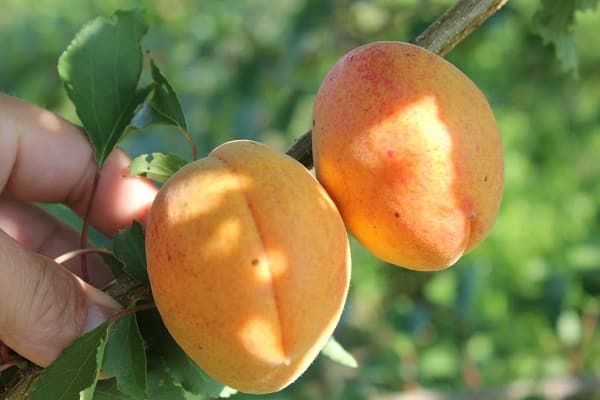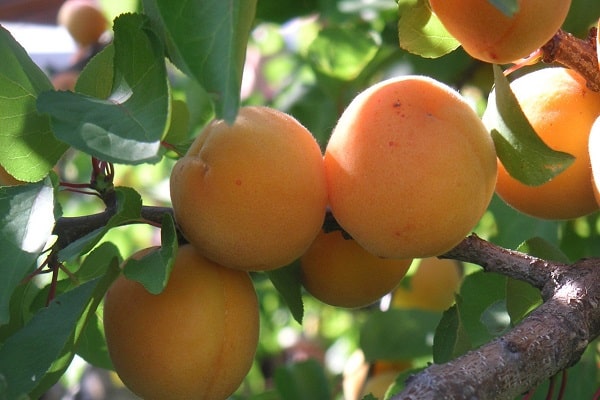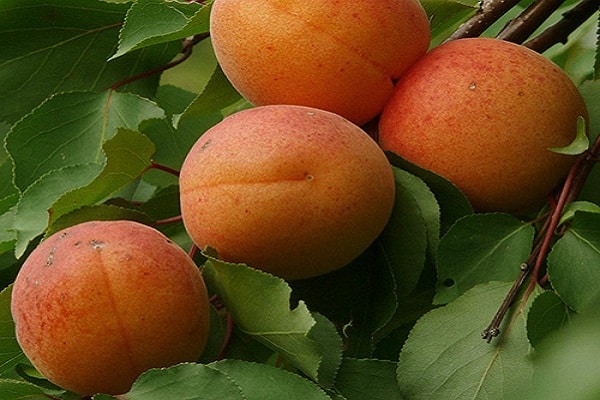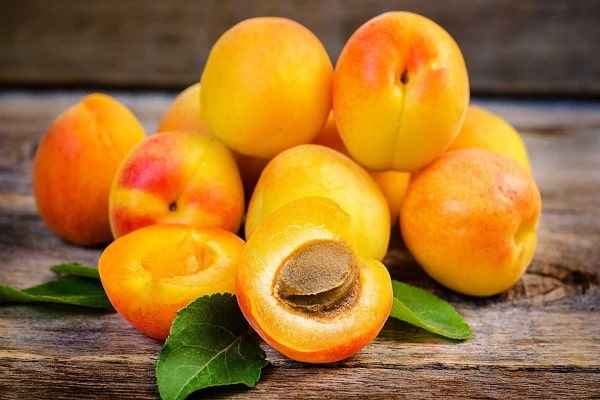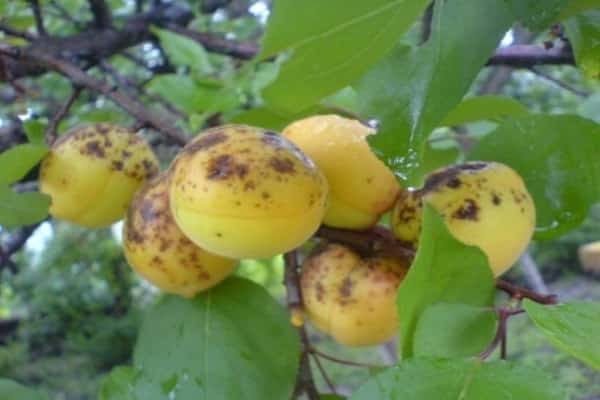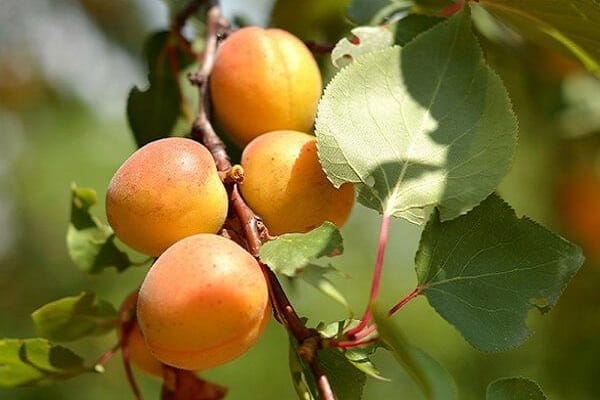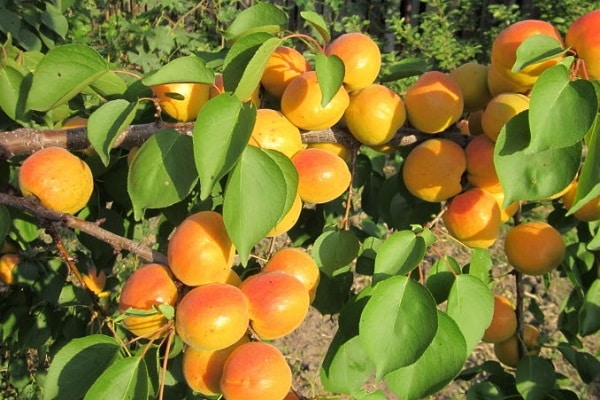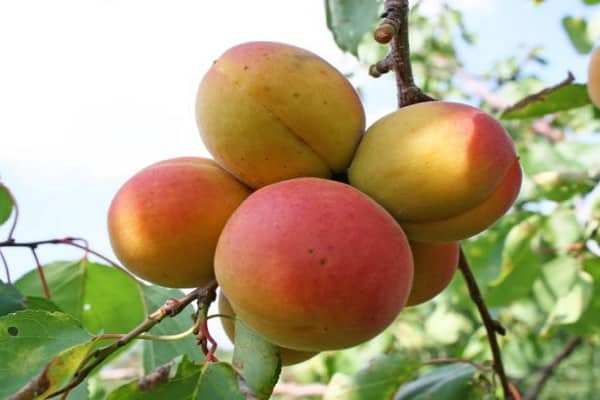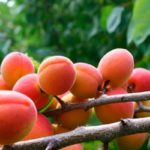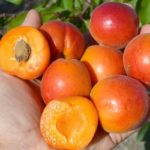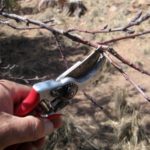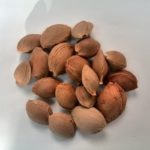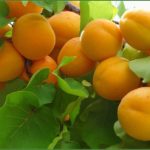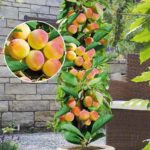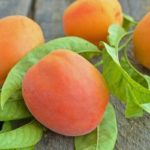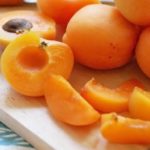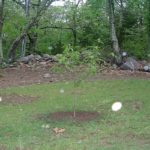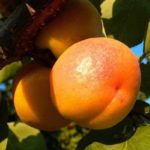Apricot varieties Countess are classified as varieties with medium ripening periods. Garden culture is distinguished by large annual harvests and attractive fruits. Their use is limited to fresh consumption, as well as the preparation of various preserves.
- Description of the variety, history of occurrence
- Characteristics of the variety
- Drought resistance, winter hardiness
- Pollination, flowering period and ripening time
- Productivity and fruiting
- Resistance to diseases and pests
- Advantages and disadvantages
- Landing Features
- Selecting a location
- Selection and preparation of planting material
- Landing dates
- Planting stages
- Care
- Trimming
- Watering rules
- Fertilizer application
- Frost protection
- Disease and pest control
Description of the variety, history of occurrence
The Countess is included in the collection of the Moscow State University Botanical Garden. The apricot variety was bred in 1988 by co-authors L. A. Kramarenko and A. K. Skvortsov. Scientists were engaged in the selection of crops for cultivation in Moscow and the region. Apricot has been on the State Register since 2004.
Trees grow quickly. They can reach 6 meters in height. The crowns are round, paniculate, and medium dense.
The level of frost resistance of apricot is quite good. The tree can withstand cold temperatures down to -30 degrees. Only the buds do not tolerate recurrent frosts.
In the description of the variety, the fruits are characterized as follows:
- color - light yellow;
- the peel is thin;
- juicy orange pulp;
- taste - sweet and sour.
Characteristics of the variety
The main characteristics of the plant will help the gardener decide on the choice of variety.
Drought resistance, winter hardiness
Countess's frost resistance compares favorably with other apricot varieties. Trees can withstand temperatures down to -30 degrees.
Abundant watering is not required. This fruit crop tolerates long dry periods well.
Pollination, flowering period and ripening time
The structure of the flowers does not allow the Countess to pollinate on its own. Therefore, she needs neighbors - Monastyrsky, Lel, Triumph Northern, Favorite.
The Countess's flowering time comes later than other varieties. The first apricots are enjoyed in mid-August. But the harvest fully ripens only towards the end of summer.
Productivity and fruiting
One tree produces up to 30 kg of fruit. A large number of fruits ripen on each branch.
The fruiting period begins in the 3-4th year. Small harvests are distinguished by large specimens, up to 35 grams. If the tree produces a large number of fruits, it will not exceed 25 g each.
Resistance to diseases and pests
Disease resistance is highly dependent on weather. In dry and hot summers, apricots ripen in perfect shape, without flaws. If it is a rainy season, then the Countess is affected by clusterosporiasis. This disease spoils the appearance of the fruit. Black unpleasant spots of any size form on their skin. Trees may begin to grow gum.
Advantages and disadvantages
The positive properties of apricot include:
- large fruits;
- long fruiting time;
- resistance to infections and parasites;
- cold resistance;
- transportability;
- rich yield.
The following disadvantages of the Countess are noted:
- ability to change taste due to weather;
- small size of apricots with high yield;
- gum discharge during frequent rains.
Landing Features
The variety does not require special knowledge and skills. Even an inexperienced gardener can grow a fruit tree.
Selecting a location
The site is chosen so that it is constantly illuminated by the sun and there are no shadows on it. Constant dryness and ventilation are also necessary. But at the same time, trees require shelter from strong gusts of wind.
Selection and preparation of planting material
It is recommended to purchase seedlings from nurseries. There, the tree is selected 1-2 years old, with a height of 50 cm.
When purchasing, pay attention to the condition of the apricot roots. They must be strong and healthy.
Landing dates
Gardeners begin the planting process in early spring, before the buds break.
Planting stages
If there are damage to the apricot roots, they are removed with pruning shears.
The Countess is lowered into the hole so that the root collar is located 5-6 centimeters upward from the soil. The apricot is covered with earth, and the area near the trunk is compacted.The tree is tied to a peg driven into the ground.
The seedling is watered abundantly with water in the amount of 25 liters. Next, the hole is mulched with sawdust. If a young apricot is too tall, trim to 65 cm.
Care
Includes the usual activities necessary to grow any variety.
Trimming
Due to the fact that the trees are tall, gardeners form sparsely layered crowns. This process takes 4 years.
You need to know that when completing formative pruning, the central conductors of the trees are cut above the upper branches. Then they carefully monitor the skeletal branches. We must not allow any of them to take the place of the central conductor. Otherwise, the tree will begin to grow upward vigorously.
At the end of each season, sanitary pruning of diseased, damaged and dry branches is carried out.
Watering rules
The main principle is observed here - watering not often, but abundantly. It is necessary to carry them out so that the soil is moistened to a depth of 40 cm. Then the soil is loosened and mulched.
Watering is carried out in the middle and end of flowering, during the growth of apricots, shoots, after picking fruit and shortly before winter.
Fertilizer application
Fertilizing is required for high yields. The seedlings are fertilized for the first time 2 years after planting.
A mixture is prepared independently, including:
- potassium salt - 40%;
- rotted manure - 5 kg;
- nitrogen compound - 60%.
It is also recommended to buy complex preparations with iron, boron, manganese.
Frost protection
Shortly before the first frost sets in, the trees are covered with wooden cones. From above they are wrapped in fabric and sprinkled with earth.
Disease and pest control
Light and extremely necessary measures are considered:
- clearing the garden of fallen leaves;
- digging up the soil;
- whitewash;
- tree processing;
- setting traps.
Regular examination and timely treatment are also necessary.


